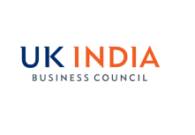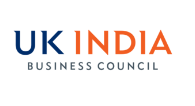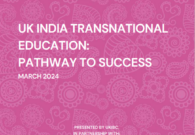Thoughts on India – February 2016
India’s 3rd quarter estimated GDP numbers were released in Delhi on Monday. They posted an acceleration of 3rd quarter growth to 7.3% year on year. The expectation is that India could post an annual GDP growth of 7.6% by the end of the 4th quarter.
These numbers flag the growing global awareness about India’s importance in the world order. Indeed, Finance Minister Arun Jaitley and RBI Governor Raghuram Rajan, the two key Government officials tasked with the job of selling the India story at the World Economic Forum Meet at Davos last month, appear to have accomplished that job quite well.
Raghuram Rajan’s public interactions were few and the RBI governor spoke in carefully measured tones about the economy’s actual state and how it should avoid getting complacent and carried away by the ‘India as the bright spot’ rhetoric. Arun Jaitley too focused on challenges and said India’s reform process would continue unhindered and called for the need to evolve more growth engines for Indian economy.
The message from both of them was clear – yes, India is growing fast, but there is more the country can do and the Indian government is focussed and true to its vision of a ‘Shining India’. A message we welcome and agree with. In an update to the World Economic Outlook (WEO) released last month, the International Monetary Fund (IMF) kept its growth forecast for India unchanged at 7.5% in 2016-17 while lowering its global growth projection. With India projected to remain the fastest growing major economy for the second year in a row, the current situation in India is clearly hopeful. India continues to benefit from lower oil prices, inflation has remained anchored, allowing the RBI to lower interest rates and January saw the Indian manufacturing sector climb back into expansion territory. The seasonally adjusted Nikkei India Manufacturing Purchasing Managers’ Index (PMI) posted a 4-month high reading of 51.1 in January, compared with 49.1 in December. For more on the outlook for the world’s second most populous economy you can register here for our webinar with YES Bank.
Domestic Demand – key to ‘Make in India’ campaign’s success
Encouraging PMI numbers will indeed be a good way to kick off ‘Make in India’ Week in Mumbai on February 13. The event will offer foreign businesses opportunities to showcase, connect and collaborate with young Indian entrepreneurs, industry leaders, and government officials and expects participation of over a 1,000 companies and delegates from over 60 countries. If you are planning to attend the ‘Make in India’ Week, do visit the UKIBC Business Centre in Mumbai.
After the launch of ‘Make in India‘, FDI has grown by about 35% in the last 17 months as compared to the previous 17 months and the Government is keen to carry on the momentum. The UK will be represented by UK Government minsters, the UK Indian Business Council and by UK industry.
Nonetheless, India cannot remain immune to the global slowdown. Amid a slowing global scenario, India will have to labour hard to make ‘Make in India’ a success and hold on to 7 % (plus) growth in 2016-17. India’s exports contracted for the 13th time in a row in December, due to tepid global demand and a volatile global currency market. The temporary boost from cheap oil will eventually wear off and with a slowing global economy the Indian growth story will have to be largely powered by domestic demand.
At the same time success of ‘Make in India’ campaign will be affected by continuing progress of the government’s reform agenda. Good and Sales Tax is rapidly assuming the prominence of an “elephant in the room”. At the same time, high on the list of priorities is pushing through measures to ease land acquisition laws, labour laws and simplify the domestic tax system. But reform in these areas were stalled in the winter session. The results of the assembly elections in Bihar have pushed a potential BJP/ NDA majority in the Upper house until 2019 – perilously close to the next General election dates of 2020. 2016 will be a crucial date in arresting this trend, with a number of state elections – in Assam, Tamil Nadu, Telangana and West Bengal – due to take place within the next 12 months and the critically important assembly elections in Uttar Pradesh in 2017. Unfortunately, prospects for wide-ranging reforms for at least the first half of 2016 look slim. To know more about ‘competitive federalism‘ in India click here.
Budget Session
Thus the right way ahead will probably not be the big-bang way of doing things, but a nudges-and-pushes approach to keep moving ahead one step at a time. In the upcoming budget session which starts of 23rd February and the Union Budget 2016-17 on 29th February, we hope the small steps of progress continue – such as the passage of the Bankruptcy Bill. No single umbrella legislation governs insolvency and bankruptcy proceedings in India and hence the Insolvency and Bankruptcy Bill, 2015, which was introduced as a money bill in the Lok Sabha on December 21, 2015, is a giant leap forward. If the Indian government is successful in passing the relevant bill, it will transform the Indian financial landscape—ensuring a consistent supply of credit; attracting new capital and expertise into business revival; and finally, enabling a real corporate bond market.
The recently launched ‘Start –up India’ campaign marks a positive step in supporting India’s innovation-driven enterprises and more entrepreneur-friendly measures are expected in the upcoming Union Budget. At the same time we wish FM Jaitley to be ambitious and fight the culture of risk-aversion and inertia that stops much-needed change to ensure smooth implementation of GST this year which will hold key for further reforms going forward.
To spend or not to spend…
Maintaining its own fiscal discipline targets, is key to both the NDA’s credibility as well as a much welcomed albeit potential near term further 0.25% per annum cut by the RBI in interest rates.
The temptation for the Union Government is a rolling-back of these targets by say 12 months in the Union Budget of 29th February so as to counter the impacts of the poor Monsoon in 2015,focus on domestic demand and take steps to revive rural demand and boost private sector investment, especially investment demand related to the infrastructure sector.
It will be finely judged call by Finance Minister Jaitley as to which way he will move…
Nonetheless….
The Indian Government has clearly articulated its commitment to growth-friendly reforms and many are being pursued with timelines wherever possible. We are hopeful that the ongoing reforms and the ones announced in this year’s Budget will work towards fully unlocking India’s potential.
We are encouraged by the recent launch of the National Investment and Infrastructure Fund (NIIF) which we perceive as a step in the right direction flagging that infrastructure is a top priority for the government.
At the same time, the impact of “Competitive Federalism” continues to strengthen. Last month UK India Business Council joined the West Bengal investor meet in Kolkata. Last week, UK India Business Council took delegations to the Karnataka investor meet in Bangalore and at the same time we hosted the Odisha state Industry Minister in London where he made an excellent presentation to an audience of over 100 attendees. You can watch the presentation here. With the imminent “Make in India” event in Mumbai, the showcasing of potential exports, FII and of investment across India are multiple.

 By Richard Heald
By Richard Heald 





